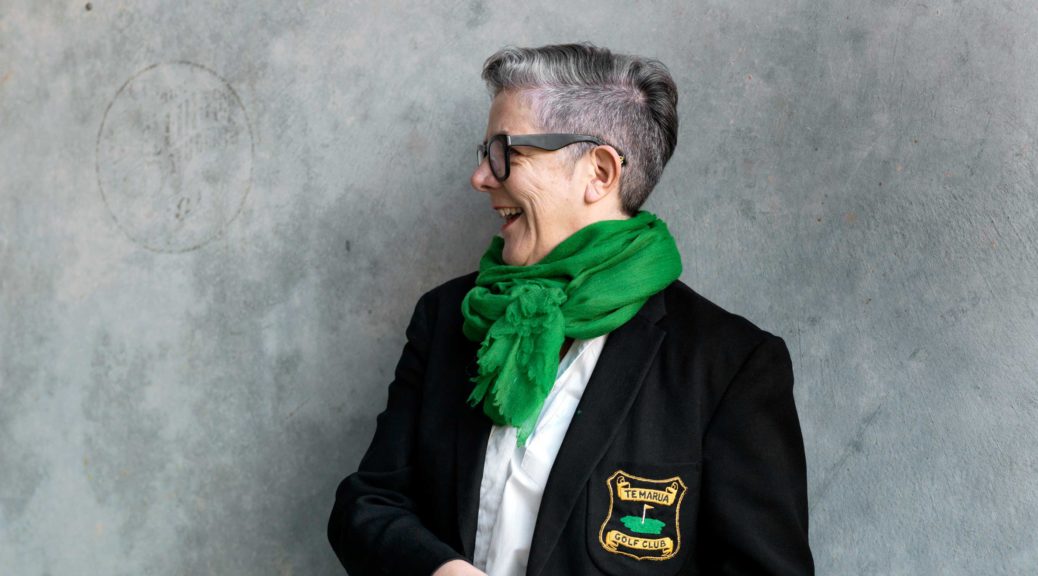PROFESSOR HUHANA SMITH
Ngāti Tukorehe, Ngāti Raukawa ki te Tonga
Whiti o Rehua School of Art
Māori knowledge systems are deeply ingrained with ecological wisdoms and human relationships between whenua (land) water, animals, insects and birds. Professor Huhana Smith, Head of Whiti o Rehua School of Art, is using this unique knowledge to carry out transdisciplinary environmental research, particularly involving freshwater and climate change vulnerabilities for Māori.
‘Our research is grounded in kaupapa Māori and mātauranga Māori [Māori practices and knowledge] and we acknowledge first and foremost the knowledge systems of our iwi [tribe] and hapū [subtribe] who have generated this knowledge via close association to place over many generations,’ she said. ‘Our projects are about determining beneficial futures for iwi and hapū, and the action, presence and leadership come from Māori. However, our research is mutually beneficial for all communities.’
Professor Smith points out that although Māori knowledge systems are ingrained with custom, they are not fixed. ‘They are constantly moving and changing, but there are some deep-seated elements that you can’t mistreat or misuse.’
For over two decades, she has been involved in projects around the impacts of ecological decline in freshwater and effects on iwi and hapū, with an aim to protect significant cultural waterway systems within ancestral landscapes that increase associated community wellbeing. ‘This is where everyone gets their food from, but by us engaging in agriculture and farming in our coastal and ancestral regions our own people had been complicit in the decline of our waterways. With support from kaumātua and the farm board, we began working to protect significant wetlands, and going through the shifts and changes that our hapū and shareholders required to understand that we needed to be protecting these places, not destroying them via our farming.’
An important method in planning for this work has been oral narrative research, to find out what people recalled about the way their region looked when they were young, the customs and sustainable practices observed. ‘Māori is a visual knowledge system, and poetic in language,’ says Professor Smith. ‘We were harnessing all of that with local knowledge of place, and deepening our concepts of whakapapa [genealogical relationships], by hīkoi or walking/talking the whenua.’
Currently, Professor Smith is leading the third phase of climate change projects funded by The Deep South Te Kōmata o Te Tonga Vision Mātauranga National Science Challenge, and her team has developed strategies for Māori coastal land-holdings between Ōhau and Waikawa Rivers. ‘These are whole-of-system approaches to things that would work on Māori land,’ she says, ‘but there are changes that need to happen within Māori governance as well.’
From 2010 to 2015 she led the Horowhenua Manaaki Taha Moana project, alongside another case study led by Tauranga Moana iwi researchers. This large project utilised Western science and mātauranga Māori to assist iwi and hapū in actively restoring and enhancing coastal ecosystems. She and her team focused on key valued areas within the Horowhenua coastline between Hōkio (near Levin) and Waitohu streams, just north of Ōtaki.
Professor Smith is also a practising artist, albeit limiting her personal commercial focus in recent years. ‘I still paint, but I’ve started channelling that creative potential by embedding myself into whenua/awa [river] based projects,’ she said. Currently, she is involved with Te Waituhi ā Nuku Drawing Ecologies group, a collaboration of artists who intend to inspire environmental and climate change awareness and action. Te Waituhi ā Nuku is working towards a large site-based exhibition in Kuku with proposed national and international reach.
‘It’s literally like whakapapa, laying down layers of effort and energy, generated by a group of us who are passionate about this for our relations, our tribal whenua and future generations,’ she said. ‘We are coming together in innovative ways to map out a new future by returning natural integrity and knowledge about place, by activating kaitiakitanga [environmental care] projects for our ancestral land.’
However, she points out, although the ecological natural knowledge systems contained within mātauranga Māori need to be re-emphasised in a contemporary context, this must be done with due respect to tradition and in care of the spiritual aspects of Māori knowledge. ‘I don’t want to see damage done to indigenous knowledge systems, because enough damage has been done already,’ she says. A large part of this transformation is respecting tikanga Māori (protocols). ‘All of our research is grounded by our marae, where all of our researchers have to come through the marae first, and only then can they get out on the whenua. We have been able to hold a series of wānanga [intensive learning on marae] about how we engage and conduct ourselves within these modes of research.
‘Contemporary conditions are really tough. Everything we engage with today in a capitalist system has to change, and I’m trying in so many ways to harness artistic and design potential within a Māori cultural context to help transform.’

